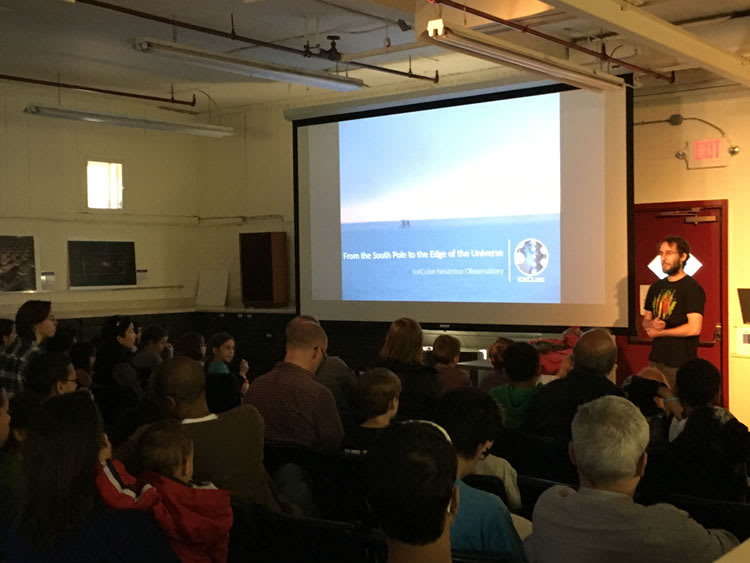The IceCube spring 2016 meeting begins today at Stony Brook University. Assistant Professor Joanna Kiryluk is hosting the weeklong meeting at the Charles B. Wang Center. Pre-meetings were held at Columbia University in New York on April 16-18. The IceCube-Gen2 team at Columbia Astrophysics and Nevis Labs hosted these early sessions focused on software training and R&D plans for IceCube extensions.
“This meeting is special as it marks the fifth anniversary of detector inauguration,” says Kiryluck. “At this exciting stage for IceCube, the meeting will allow us to celebrate success, advance our science, and plan for the future.”

Biannual meetings provide an opportunity for the geographically dispersed collaboration to interact face-to-face. Throughout the week, 200 attendees will discuss ongoing analyses, including searches for astrophysical neutrinos sources, characteristics of the astrophysical neutrino flux, cosmic-ray anisotropy studies, the IceCube neutrino oscillations results, and searches for physics beyond the Standard Model. The collaboration will also discuss recent upgrades to IceCube neutrino alerts, which send information about interesting high-energy events to other observatories around the world, as well as progress in detector operations, software, education and outreach, research and development, and the science potential for future extensions of the IceCube Neutrino Observatory.

A public event was also held at Nevis Labs on Saturday, April 16. Young scientists and their families explored ice drilling (simulating the technique used to build IceCube), tried on cold weather gear used in Antarctic expeditions, and classified IceCube events with an online viewer. The afternoon included a talk by 2014-15 winterover Stephan Richter about the challenges and rewards of living and working at the South Pole for a full year.
The next meeting will be held in September at the University of Mainz in Germany.